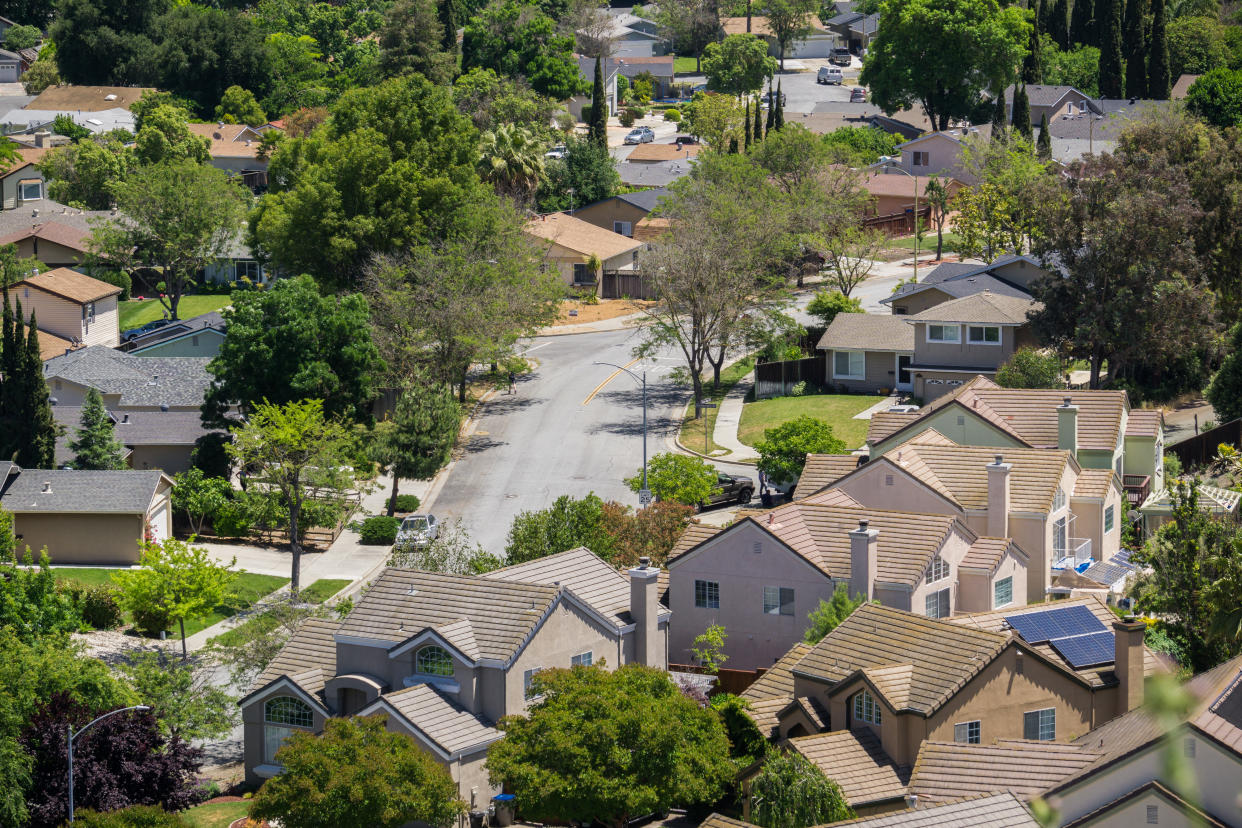Million-dollar homes are the ‘middle class’ options for homebuyers in many cities
Homebuyers in some cities have no choice but to buy million-dollar homes as prices near all-time highs.
The share of million-dollar homes is rising across the nation. Redfin found that 8.2% of houses in the US are now worth seven figures, up from 7.3% in February and just shy of the peak of 8.6% recorded in June 2022. Of the 90 million homes studied, approximately 7.46 million units were over a cool million.
A separate report from LendingTree found that two California cities have larger shares of million-dollar homes than properties under that mark. The percentage of homes over $1 million was 66.28% in San Jose and 52.91% in San Francisco. Los Angeles followed at 26.48%, San Diego at 23.15%, and Seattle at 18.70%.
The reports underscore how in many markets, million-dollar homes are not necessarily luxurious; rather, they are the norm, leaving many homebuyers with few affordable options.
"There are a lot of areas, especially really expensive areas, at this point where million-dollar homes have not only become more common, they've also — for lack of a better term — become more middle class," Jacob Channel, report author and LendingTree's senior economist, told Yahoo Finance.
Limited supply for homes under a million in these cities
A quick search on Redfin shows the dire situation in some cities.
There are 1,230 homes for sale in San Diego, but just 529 units are listed at $1 million and under as of Wednesday this week.
Of these, only 114 properties have three or more bedrooms and only 63 units are single-family homes. This puts the share of homes at $1 million and under at 43%, and three-bedroom-plus single-family homes at 5.1% for homebuyers, according to active Redfin's listing as of Aug. 30, 2023.

"This really goes to show just how expensive a lot of housing markets can be and what kind of housing people can expect to encounter in those markets," Channel said. "[These homes] are not huge, only a few bedrooms, modest amenities."
The median home sales price in Santa Clara County — where San Jose and Silicon Valley are located — was $1.8 million in the second quarter, according to data provided by Compass. The monthly mortgage on a home at that price is close to $9,900, based on the average 30-year interest rate of 7.28% for a jumbo loan and a 20% down payment of $360,000.
Read more: What the latest Fed rate hike plan means for mortgage rates and loans
More homes sold between $3 million and $4 million (391 units) than sold for less than $1 million (285 units) during a six-month period reported on July 15.
"Even if you earn say $100,000 or $150,000, that still might not be enough to buy the kind of a modest or appropriate house for you and your family," Channel said. "We've certainly seen this where even people who work in high-paying tech industries, finance, and so forth have found themselves pushed further and further away from city centers."
The median home price in San Francisco was $1.335 million even after prices dropped significantly during the recent housing recession. The monthly mortgage payment at this price is $7,307, with 20% down and a 30-year rate of 7.28%.
There were 897 units that sold for over $1 million during the six-month period reported on July 15, including 10 properties that went for more than $10 million.
How many sold for less than $1 million during the same period in San Francisco. Just 100 units.
These sales also create an unhealthy vicious cycle. The owners of these million-dollar homes, in turn, become homebuyers themselves, but armed with a boatload of cash to bid on their next property.

That’s showing up in the data, too.
The level of all-cash buying activity rose to a 9-year high, or 33.4%, in April 2023. Meaning of all the US homes purchased, one-third were purchased by all-cash buyers this spring. The level of all-cash activity has been steadily increasing since April 2020, as sellers cash out on their equity and borrowing gets expensive.
"More people are buying homes all cash than they have in recent years," Patrick Carlisle, chief market analyst for the San Francisco Bay Area at Compass, said. "Well of course, that doesn't help normal people because normal people can't afford to buy something all cash. We have a very weird situation going on right now."
This is a problem for cities like San Francisco because essential government workers are struggling to afford living in the communities where they serve.
"The fact that normal people — school teachers and firemen and policemen and the people who work in stores — can't afford to live in the county in which they work, that's not good and it's not a healthy social situation," Carlisle said. "It's very troubling.”
Rebecca Chen is a reporter for Yahoo Finance and previously worked as an investment tax certified public accountant (CPA).
Read the latest financial and business news from Yahoo Finance
